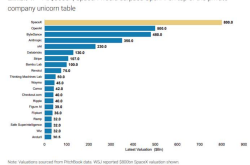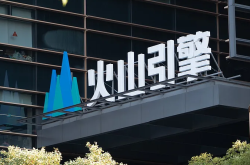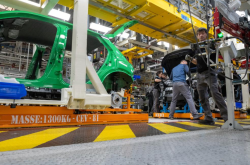DeepSeek R2 Ignites a New Wave of Co-evolution in China's AI and Chip Industry
![]() 07/21 2025
07/21 2025
![]() 444
444

[Abstract] In June 2025, a leaked research report from Morgan Stanley's Japanese team prematurely revealed details about the DeepSeek R2 version, sparking an immediate surge in the semiconductor and AI sectors.
In the realm of advanced processes, the demand for DeepSeek is driving capacity expansion. Despite China's mainland having limited capacity, it is gradually catching up. Simultaneously, DeepSeek has proven that innovative architectures can transcend process limitations.
Behind large language models, DeepSeek is propelling the entire localization process chain, encompassing computing power chips, storage devices, optical modules, and advanced packaging.
This presents a challenge for domestic vendors in ecosystem development. Embracing this new opportunity through mutual benefit and win-win collaborations is the next critical step.
Here is the text:
Overnight Success of DeepSeek
At the dawn of 2025, DeepSeek abruptly became the focal point of the global AI community. News spread that the new generation of large language models had surpassed GPT-4.5 in numerous benchmark tests, sending shockwaves through the industry.
In the same month, the DeepSeek app soared to the top of the free APP download rankings in the US Apple App Store, surpassing ChatGPT. Remarkably, the DeepSeek team revealed that this large model achieved performance comparable to giants like OpenAI at an astonishingly low cost (US$6 million) and with a minimal number of chips (2,000 pieces).
In June 2025, a leaked research report from Morgan Stanley's Japanese team prematurely unveiled details about the DeepSeek R2 version, immediately boosting the semiconductor and AI sectors on the same day.
There are three noteworthy aspects of DeepSeek R2:
First, DeepSeek abandoned NVIDIA's H100 GPU and adopted Huawei's Ascend 910B chip.
Second, the cost of invoking AI in the R2 version is lower than that of the R1 version. The output cost of R2 is only US$0.27 per million tokens, compared to US$2.19 for R1, representing a staggering 87% reduction in cost.
Third, the R2 version of the model can process data such as text, images, speech, and video.
These three breakthroughs signify a new era for China's AI industry. The development of DeepSeek is not merely a leap in large language models but a co-evolution of the entire industry supporting it.
Addressing the Bottleneck of Advanced Processes
According to the SEMI report, global 300mm wafer fab capacity will expand at a compound annual growth rate of 7% from 2024 to 2028, with advanced process capacity growing at a rate of 14%, double the industry average.
The primary driver of this growth is the surging demand for chips from AI large models like DeepSeek. Ajit Manocha, President and CEO of SEMI, stated that AI will continue to be a transformative force in the global semiconductor industry, driving a significant expansion of advanced manufacturing capabilities.
While China has established a relatively complete system in most areas of the semiconductor industry, the level of autonomy in key semiconductor equipment and basic materials remains low.
From a global perspective on wafer manufacturing, China's mainland has substantial capacity for processes above 10nm, but the capacity for advanced processes is notably insufficient. The SEMI report for the fourth quarter of 2024 indicated that by 2032, China's mainland may only account for 3% of capacity in advanced processes below 10nm.
However, the growing demand on the supply side will inevitably push for capacity expansion. Amid the tense international situation, the supply of advanced chips to China is declining, stimulating the development of the domestic industry.
Although the development of Huawei's Kirin series of chips also faces challenges in the wafer manufacturing process, if its 9000i chip achieves full independent production, it will mark a significant improvement in the level of autonomy in China's local wafer manufacturing supply chain.
Simultaneously, DeepSeek's ability to achieve high-performance model training on limited H800 chips demonstrates that advanced processes are not the sole path for AI development, thereby alleviating the issue of advanced process chip capacity to some extent.
Co-evolution of AI and Chips
Currently, DeepSeek has emerged as a major catalyst for the chip industry.
Previously, high-performance chips like NVIDIA's H100 GPU were nearly standard in the AI industry. However, with the US government continuously introducing new regulations for AI chip management, procuring NVIDIA chips domestically has always been challenging.
At this juncture, domestic chips have become a crucial option, and domestic chip vendors are actively adapting to DeepSeek applications. Vendors such as Huawei Ascend, Mooresys, Bitmain, Moore Threads, Hygon, and Biren Technology have successively announced their adaptation or availability of DeepSeek model services.
Moreover, high-performance storage is indispensable for DeepSeek training and inference, and storage-focused vendors have also embarked on rapid development with the advent of large models.
For instance, Tongyou Technology, as a storage supplier, provides SSD, HDD, HBM, and other storage devices for DeepSeek and collaboratively develops customized storage solutions. Similarly, EasyStack's new-generation cloud storage MetaStor is fully compatible with DeepSeek's privatized deployment requirements, offering high-performance, low-latency storage products.
In addition to computing power and storage, the extensive data transmission requirements have sparked an explosion in the optical module market. Data transmission between AI servers necessitates a vast number of high-speed optical transceivers, responsible for converting electrical signals into optical signals for transmission through optical fibers and then converting the received optical signals back into electrical signals.
Research by Galaxy Securities reveals that future demand for more powerful training models will drive the rapid development of optical modules, and the process of self-reliance in core components like optical chips may further accelerate.
The widespread application of DeepSeek has also fueled upgrades in the wafer foundry and advanced packaging industries. China already possesses strong competitiveness in the packaging and testing segment, and with the promotion of large models, advanced packaging is expected to lead the way in scaling up, providing a prime opportunity for domestic front-end and back-end equipment to commercialize in high-end production lines.
As the yield of HBM directly impacts chip performance, domestic packaging and testing companies such as JCET and Hua Tian Technology have increased their investment in advanced packaging research and development.
From chip design, manufacturing, to packaging and testing, from computing power cores to storage and transmission, the application demand of DeepSeek is propelling domestic AI chip industry to achieve breakthroughs across the entire chain. This co-evolution signifies that China's AI chip industry is transitioning from single-point breakthroughs to systemic maturity.
Epilogue
The comprehensive application and rise of DeepSeek are not only new hopes for China's AI but also a pivotal turning point in reshaping the global chip industry.
From overcoming the bottleneck of advanced processes to fostering collaborative innovation across the entire industry chain, DeepSeek has demonstrated its formidable ability to "break out of the cocoon and become a butterfly." This chip industry transformation sparked by the algorithmic revolution is scripting a Chinese solution for the new era and nurturing China's industrial chain.
The future is upon us, and seizing opportunities first is paramount. This presents a challenge for domestic vendors in ecosystem development. Embracing this new opportunity through mutual benefit and win-win collaborations is the next critical step.
- XINLIU -






